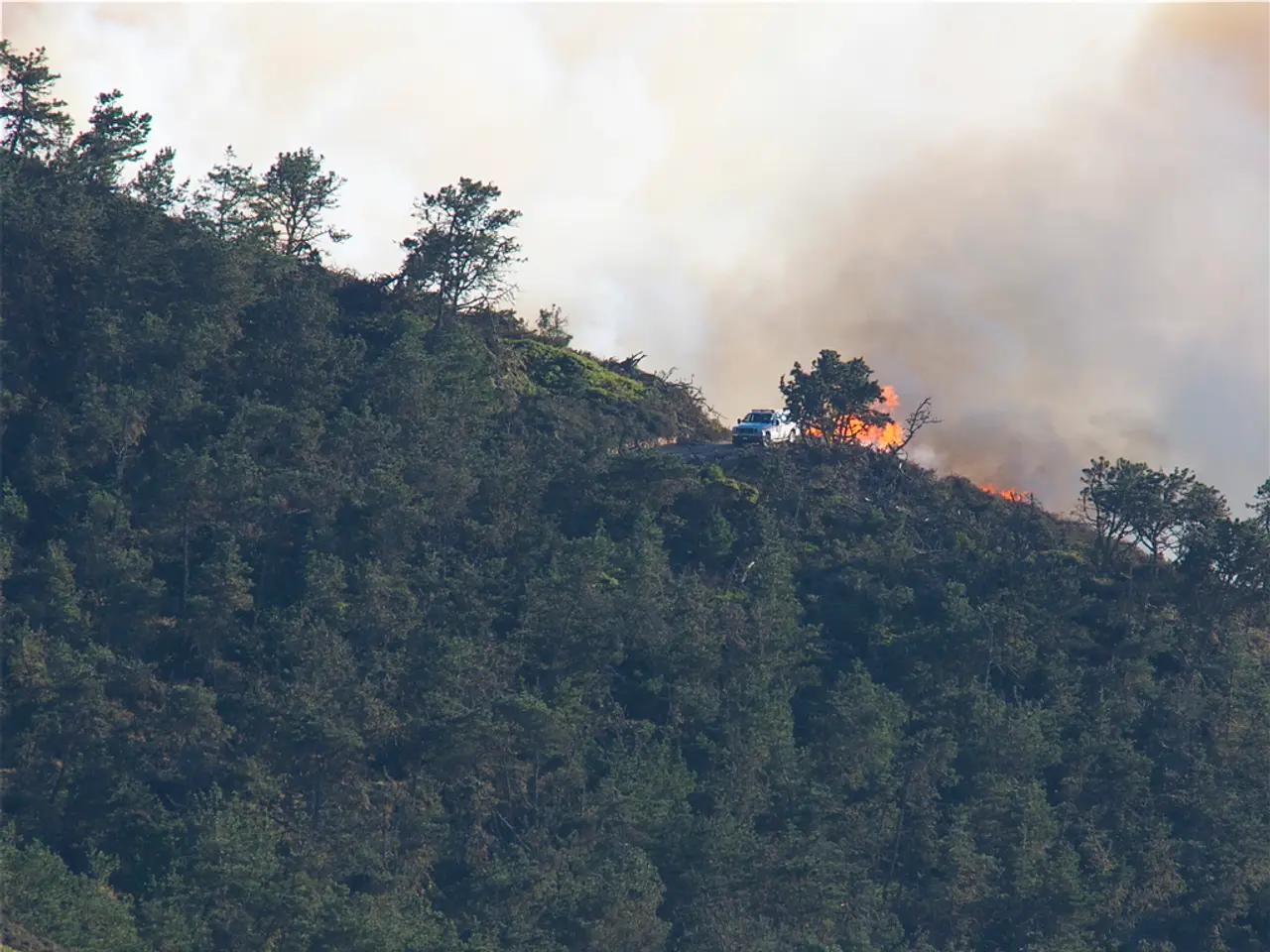Today, we are amid a typhoon
**Headline:** Typhoon Danas Strengthens, Set to Affect Northern Philippines Indirectly
**Sub-headline:** The tropical storm is expected to bring enhanced monsoon rains and localized flooding risks to certain areas.
As Typhoon Danas continues to strengthen, the Philippines braces for indirect impacts such as rains and potential flash floods and landslides in northern regions. Here's a comprehensive update on the current situation:
- **Current Status and Intensity:** As of July 6, 2025, Danas has intensified into a typhoon, with maximum sustained winds of up to 120 kilometers per hour and gusts reaching 150 kilometers per hour. Its center is located approximately 385 kilometers west-northwest of Itbayat, Batanes, moving north-northeastward at 10 kilometers per hour[1][2].
- **Expected Path:** Danas is forecast to continue moving northeastward, potentially re-entering the northwestern boundary of the Philippine Area of Responsibility (PAR) on July 7, either in the evening of Domingo or in the morning of Lunes. Afterwards, it is expected to exit the PAR immediately, moving towards the East China Sea where it will weaken due to unfavorable conditions and interaction with China’s landmass, potentially degenerating into a remnant low by July 10[1][2].
- **Warnings and Affected Regions:** Although Danas is not expected to make landfall in the Philippines or have a direct effect, its associated weather conditions will impact northern parts of Luzon, particularly Batanes and the Babuyan Islands. These areas may experience cloudy skies, scattered rain showers, thunderstorms, and risks of flash floods or landslides due to moderate to heavy rains[3]. The southwest monsoon (habagat) enhanced by Danas will bring occasional rains to the Ilocos Region, Zambales, Bataan, and scattered showers to Metro Manila, Cordillera Administrative Region, CALABARZON, MIMAROPA, Western Visayas, and other parts of the country[3]. No tropical cyclone wind signals have been raised in the Philippines as Danas currently poses no direct threat to the country[3].
In summary, **Typhoon Danas is strengthening but is expected to pass mostly offshore from the Philippines**, with indirect effects such as enhanced monsoon rains and localized flooding risks in northern Luzon and nearby islands. Authorities continue to monitor its development and issue advisories to ensure preparedness[1][2][3].
**Additional Information:** - Tropical cyclone Danas formed over the Philippine Sea on July 6, 2025. - According to the Office of Civil Defense officer-in-charge Bernardo Rafaelito Alejandro IV, approximately 3,773 families have been affected by typhoon Danas in the Ilocos Region (Region 1), Cordillera Administrative Region (CAR), and Cagayan Valley (Region 2)[4]. - The Philippine Atmospheric, Geophysical and Astronomical Services Administration (Pagasa) advises the public to continue monitoring updates on the typhoon[3].
[1] Pagasa. (2025, July 6). Typhoon Danas to affect PH indirectly, says Pagasa. Retrieved from https://www.pagasa.dost.gov.ph/
[2] GMA News. (2025, July 6). Typhoon Danas intensifies into a typhoon, may enter PAR on July 7. Retrieved from https://www.gmanetwork.com/
[3] Inquirer.net. (2025, July 6). Typhoon Danas to bring rains, possible flooding in northern Luzon. Retrieved from https://newsinfo.inquirer.net/
[4] Rappler. (2025, July 6). Typhoon Danas affects 3,773 families in Ilocos, CAR, Cagayan Valley. Retrieved from https://www.rappler.com/
- As Typhoon Danas continues to intensify, concerns regarding climate change and its potential impact on the Philippines' weather patterns continue to prompt discussions in the realm of environmental science.
- Authorities in the Philippines are closely monitoring the development of Typhoon Danas, understanding that weather patterns driven by such tropical storms may contribute to the complexities associated with ongoing climate change.
- Meanwhile, scientists studying climate change and environmental science keep a watchful eye on Typhoon Danas' movements, as they look for patterns and trends within such events with a broader perspective of the impact on the environment and the nations affected by them.







